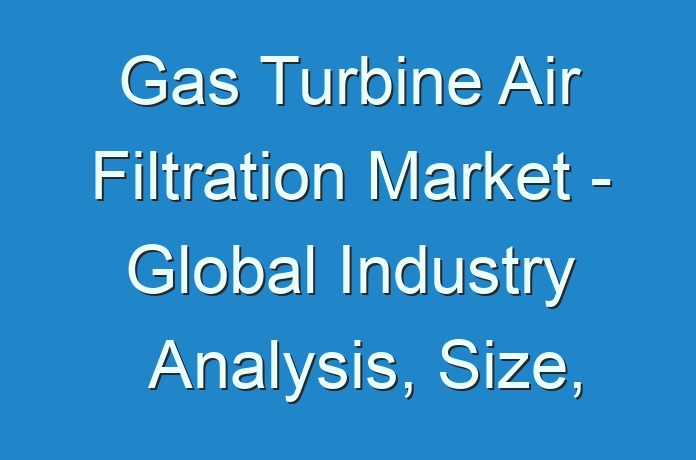
With increasing output requirements and longer service tenure, it is mandatory for the operator to optimize their air inlet system. The functioning of the gas turbine is reliant on inlet air filtration systems. The prime function of the inlet filter system is to protect the gas turbine form pollutants in the inlet air. Erosion is mainly caused due to accumulation of relatively coarse particles above 5 µm in size. Smaller particles in the sub-micron size cause fouling of turbine blades and cooling holes. This reduces performance and becomes a serious threat to the turbine. Hot corrosion is an accelerated corrosion of metal surfaces that results from the combined effect of oxidation and reactions with sulfur compounds and other contaminants such as chlorides. Effective capture of small particulate and airborne salt is therefore of vital importance for long and efficient operation.
Over a period of time, gas turbine air filtration systems have evolved from simple coarse solid particulate removal systems to sophisticated and efficient systems capable of filtering solid & liquid particles. This evolution and development of filtration system is mandatory in view of increasingly sensitive nature of particles entering gas turbine. The technology has led to higher tolerance of machines and systems in modern turbines for increased operating temperature. Thus, choosing the inlet filtration system is crucial in gas turbine design. Sub-standard inlet air systems can negatively affect operations, performance, and lifespan of gas turbines. The improper functioning of the inlet filtration can lead to erosion, corrosion, and fouling. Fouling occurs when external pollutants with size ranging from 2 microns to 10 microns get sucked into turbine blades. These particles create roughness on the blade, even altering the shape of the blade at times. Hence, the efficiency and output upgrade of gas turbines should be carried out according to the availability of proper inlet filtration.
Request a Sample-
https://www.transparencymarketresearch.com/sample/sample.php?flag=S&rep_id=42773
It is increasingly necessary to protect high speed elements within the gas turbine from excessive wear. As a result, the HEPA range of filters is now frequently used. Since these filters do not have the dirt holding capability of less efficient filters, it is typical to use pre-filters. Filters are often supplied by companies who manufacture complete intake systems, pplying filters, cooling devices and the housing. Common filters used today are medium grade filters, which are insufficient to capture submicron particles that cause fouling and performance loss. A newly developed filter made with hydrophobic expanded-polytetrafluoroethylene (ePTFE) membrane offers high efficiency particulate arrestor (HEPA) efficiency with ability to block water and salt penetration.
In terms of product type, the gas turbine air filtration market can be segmented into intake systems, self-cleaning air system, static air filters, inlet silencer, inlet ducting, air-inlet cooling system, cartridge filters, compact filters, pulse filters, panel filters, pre-cleaning filters, and others.
Buy now-
https://www.transparencymarketresearch.com/checkout.php?rep_id=42773<ype=S
In terms of region, the market for gas turbine air filtration can be classified into North America, Europe, Asia Pacific, Latin America, and Middle East & Africa. Demand for gas turbine air filtration is high in North America. However Asia Pacific is expected to dominate the market during the forecast period, particularly driven by the expansion in the industrial sector.
Major companies operating in the gas turbine air filtration market include Camfil, GE Energy, Donaldson DencoHappel, Shinwa Corporation, and Koch Filter Corporation.
This study by TMR is all-encompassing framework of the dynamics of the market. It mainly comprises critical assessment of consumers’ or customers’ journeys, current and emerging avenues, and strategic framework to enable CXOs take effective decisions.
Request for covid19 impact analysis –
https://www.transparencymarketresearch.com/sample/sample.php?flag=covid19&rep_id=42773
Our key underpinning is the 4-Quadrant Framework EIRS that offers detailed visualization of four elements:
- Customer Experience Maps
- Insights and Tools based on data-driven research
- Actionable Results to meet all the business priorities
- Strategic Frameworks to boost the growth journey
The study strives to evaluate the current and future growth prospects, untapped avenues, factors shaping their revenue potential, and demand and consumption patterns in the global market by breaking it into region-wise assessment.
The following regional segments are covered comprehensively:
- North America
- Asia Pacific
- Europe
- Latin America
- The Middle East and Africa
Companies in the Gas Turbine Air Filtration market have increasingly shifted gears with wide application of digital technology across the continuum, from raw material sourcing to manufacturing to generation of final output, to warehousing to final distribution operations. Among the various affects, the market is witnessing new growth economics due to thinning of line between specialty and commodity businesses that are associated with the larger ecosystem. At the same time, new growth parameters are being vigorously being debated as industry stakeholders put greater emphasis on the circular economy processes.
More Trending Report-





